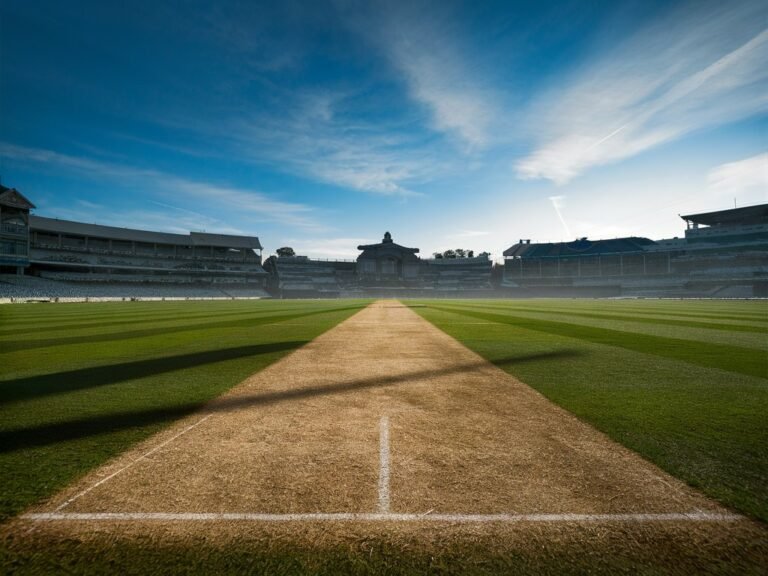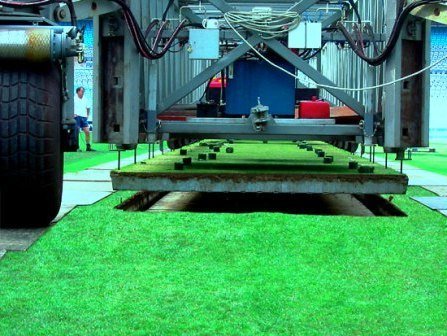Heart of Cricket - Drop in Pitch or Regular Pitch
The pitch is the heart of the matter in any cricket match – a strip of ground where bowlers will release their lethal deliveries and batsmen will exhibit their repertoire. However, scratch beneath the surface and there is a veritable universe between the two in traditional and drop-in pitches.
Regular Pitches: Steeped in Tradition
They are created on the ground meticulously grown and nurtured for years. The soil, the grass and the overall wear and tear, all have a say on how the pitch behaves during a match.
Well, there are regular pitches, which enjoy the natural evolution of pace, bounce, spin throughout the course of play. This twist in the game makes the match a bit more serious as now some strategy as well as a few skills would get tested.
It takes years of experience and the perfect weather to create a great pitch. Not to mention those multi-purpose stadiums fail to hold proper cricket pitches.
Here is the Youtube Video on Various Cricket Pitches.
Proper watering is crucial for maintaining the pitch. The pitch should be watered regularly to ensure the grass remains healthy and the surface is not too dry or too wet
The regular pitches do have a lot of controversies glued to them. The unpredictability and favoring to one particular team has always been at the centre of regular pitch controversy. In 2023, ODI world cup, during the match between India and New Zealand the pitch controversy took place and even during the World Cup Final also Australia did mention about swapping the pitch.

Drop-In Pitches: A Modern Marvel
These new pitches are grown in steel trays outside of the stadium. Made from a carefully crafted combination of soil, grass, and clay, useful to bring out certain characteristics.
Multi-purpose stadiums can transport and then install them to prevent damage to the pitch such requirement of the ICC. Further, curators can manage pitch behavior to a certain extent, preparing pitches as per the specific format, T20s in this case.
Once prepared, the drop-in pitches are transported to the stadium. In some cases, they may be transported inside shipping containers.
The argument against drop-in pitches is that not being part of the natural landscape like a traditional pitch means the surfaces may tend to be less up-and-down, with the end result potentially being more run-laden one-sided affairs than epic encounters. It also takes years to prepare the first drop-in pitch. Recent, T20 world cup the New York Drop in pitch was a talking point. Read the full article about the controversy of T20 World Cup 2024.

The Cost of Drop-In Pitch and Regular Pitch
The cost of a drop-in pitch may include expenses associated with preparing the pitch off-site, transportation, installation, and regular maintenance. On the other hand, the cost of a regular pitch may include soil preparation, grass seeding, watering, mowing, rolling, and repairs if needed.
The cost PCB paid for the drop in Pitches was almost 37 crore rupees while in India they are installing the drop in pitch in Kerala for almost 8-10 crore.
The Pitch of Nassau County International Cricket Stadium
The pitch at Nassau County International Cricket Stadium, located in New York, is a drop-in pitch. It was prepared in Adelaide, Australia, and then transported inside a shipping container to New York for installation. The pitch has received some criticism during the T20 World Cup for not playing consistently and producing variable bounce. However, efforts are being made to address these issues and improve the playing conditions.
Nassau County International Cricket Stadium was built as part of an ambitious project by the International Cricket Council (ICC) to host matches during the T20 World Cup. The stadium was constructed in just five months and was designed to accommodate eight matches during the tournament. The purpose of the stadium is to provide a venue for international cricket matches, particularly in regions where cricket is not traditionally played, such as the United States. To Promote Cricket in various parts of the world is the top most agenda of ICC. USA Cricket has benefited a lot from this world cup.

The Final Verdict on Drop in Pitches vs Regular Pitches
The choice between drop-in and regular pitches boils down to a specific context. Traditional pitches offer a unique character and test a cricketer’s all-around skills. Drop-in pitches, on the other hand, prioritize versatility and cater to the demands of modern cricket.
Ultimately, both types have their place in the game. The future of cricket pitches might see a blend of tradition and innovation, with curators utilizing the best aspects of both to create surfaces that are both challenging and entertaining for players and viewers alike.
F&Q -Drop in Pitch Vs Regular Pitch
- What is a pitch? A pitch is the central playing surface in cricket, where the bowler runs up and delivers the ball to the batsman.
- What is the difference between a drop-in pitch and a regular pitch?
- A regular pitch is prepared on-site at the cricket ground itself. The soil, grass, and overall playing surface are developed and maintained specifically for that location.
- A drop-in pitch is pre-cultivated off-site in a special tray system. It is then transported and “dropped in” to the venue for a match.
- What are the advantages of a drop-in pitch?
- Allows multi-purpose stadiums to host other events without damaging the cricket pitch.
- Offers more consistent playing surface across different venues.
- Can be prepared for specific match types (e.g., batsman-friendly or bowler-friendly).
- What are the disadvantages of a drop-in pitch?
- Can be expensive to create and maintain.
- May not age or “weather” naturally, leading to less variation in bounce and behavior.
- Requires heavy machinery for transportation and installation.
- What are the advantages of a regular pitch?
- More traditional and considered to offer a more natural playing surface.
- Develops unique characteristics over time, adding variety to the game.
- Generally less expensive to maintain compared to drop-in pitches.
- What are the disadvantages of a regular pitch?
- Limits the versatility of the stadium.
- Playing surface can be affected by weather and wear-and-tear.
- May not be ideal for back-to-back matches.
- How long does it take to prepare a drop-in pitch?
- It can take several years to cultivate a high-quality drop-in pitch.
- Are drop-in pitches more common in certain countries?
- Yes, drop-in pitches are more prevalent in countries with multi-purpose stadiums like Australia.
- Can a drop-in pitch last for multiple matches? Yes, with proper maintenance, a drop-in pitch can be used for several matches before needing refurbishment

Pingback: Clash of the Titans: Who can Survive the T20 World Cup Super 8?
I know a lot of folks whom I think would really enjoy your content that covers in depth. I just hope you wouldn’t mind if I share your blog to our community. Thanks, and feel free to surf my website Webemail24 for content about PR Marketing.